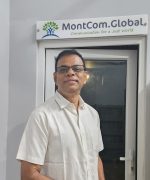As I enter this ramshackle building a pungent smell of cow dung and urine pierces my nostrils. Cow dung is lying everywhere. Pools of urine are formed here and there. The walls are collapsing. This was once a Catholic church. Now the place has become a resting place of grazing cows. On the wall, which once formed the backdrop of the sacred altar, local Romeos have drawn love signs and written messages for their Juliets. Come to Gunjabadi, Kandhamal district of Odisha, India any believer in any God of any religion would be shocked out of their wits. I’m an atheist, I don’t go to church or any other worship places. Still I was shocked. Even though I don’t pray, I respect the right of people to pray or visit worship places without fear, threat or intimidation. This is fundamental right guaranteed by the Constitution of India. Under article 25 “all persons are equally entitled to freedom of conscience and the right freely to profess, practice and propagate religion.” Now here is a church, which has now become a cow shed. The Christian believers of this village have no place to assemble and pray. This church has been lying this way since August, 2008. Kandhamal is the location of the worst organized communal violence against Christian community in India in over 300 years. It all started on August 25, 2008. Hindutva fascists unleashed massive attack on minority Christians in Kandhamal on that day. For four days, Hindutva forces went on rampage and killed over 90 Christians. Dozens of people went missing and never to be located again. The violence lasted for four months. Over 350 churches and worship places which belonged to the Adivasi Christians and Dalit Christians were destroyed, around 6,500 houses were burnt or demolished, over 40 women were subjected to rape, molestation and humiliation and several educational, social service and health institutions were destroyed and looted. More than 56,000 people were displaced. Several cases of forced conversion to Hinduism by the Sangh Parivar took place during the violence. One nun was gang raped in front of a crowd of over 300 people, while 8 police men looked on. This nun ran towards the policemen asking for help but they did nothing and stood there simply watching the spectacle. It all happened just a stone’s throw away from Nuagaon police station. Gunjabadi church also was destroyed by the frenzy of the Hindutva mobs. Hundreds of Hindutva fanatics gathered in Gunjabadi village with petrol, diesel, kerosene, gas cylinders, petrol bombs etc and then desecrated it, looted its properties and burnt
the church. For the last seven years the church is lying in ruins. Outside the church thick brushes are growing around the walls. The way to the church is a muddy slush mixed with cow dung. We meet the villagers gathered around the church. A sense of fear and renunciation is writ large on their faces. When they start talking, they are not talking about rebuilding the church. They don’t even remember the name of the Church! They are saying about the threat to their lives and livelihoods. These are poor Adivasi Christians. Many have left the village out of fear of persecution and for those remain in the village the sense of fear has not left them. They talk about the fear of going to the forest to collect wild produce, the source of main income of Adivasi people. Their fear is not out of context. Recently, elsewhere in Kandhamal two innocent villagers who went to the forest to make a phone call to their sons working in Kerala, were killed by CRPF in the name of combating Maoist violence. Coming back to the church that has become a cow shed, why did it remain so for so long? Whose responsibility was this to rebuild the church? It is apparent that the government or the Church authorities have not taken any initiative to rebuild this worship place of poor Adivasi and Dalit Christians. In Kerala, where I come from, The New Indian Express recently reported that St George Forane Church, Edappally, near Ernakulam, Kochi (Cochin) was reportedly re-built at a cost of Rs `30 crore to `50 crore” (300 million to 500 million rupees). Do the people who built this palatial church and the Bishops, Archbishops, and Cardinals who guide the parishioners know that the Gunjabadi church has now become a cow shed? Do they know, bother or care about the plight of the victims of one of the worst violences against Christians in India in the last three centuries? So far, the government has not provided any compensation to the destroyed churches. In a memorandum presented to the president of of India, “Kandhamal Nyaya, Shanti O Sadbhabana Samaj” (Kandhamal justice, peace and goodwill society) has asked for a presidential intervention to provide compensation to re-build the destroyed churches. All they are asking for – “the village churches which are destroyed must be provided a compensation of Rs 15 lakhs (1.5 million rupees) and the parish churches that are destroyed must be provided a compensation of Rs. 30 lakhs (3 million rupees).” Will they get it? Even if they get it, of these, re-building the church, or re-building their lives, which is more important to the villagers of Gunjabadi? After visiting the place, I get the feeling that rebuilding their lives is more important to the villagers of Gunjabadi. Let peace, justice and harmony return to Kandhamal. Until then the destroyed churches of 2008 Kandhamal communal violence will remain as cow sheds. (Binu Mathew is the editor of www.countercurrents.org. He can be reached at editor@countercurrents.org. This article appeared in Counter Currents on August 10, 2015)










